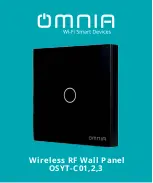
Appendix A. Data formats and
transmission durations
Data transmissions are generally described as having an ASCII or pseudobinary format. The
particular nature of how the data is formatted prior to sending the data over-the-air. The data
order in those transmissions is determined by the content and organization of the
DataTables()
and execution of
GOESTable()
and
GOESField()
. Scan-order (interleaved) and channel-
order data can be sent by using an ASCII or pseudobinary format with one of the native data
logger data format options. The flexibility of CRBasic allows virtually any message type to match
the decode system requirements.
A.1 ASCII data format
ASCII data formats are used to transmit data in plain readable text. This format is widely used for
random or alert transmissions. They can be used for self-timed messages. Several standard
formats are selectable within CRBasic. Formats not included can be easily formed using string-
formatted data fields, allowing the content to be tailored to your application needs. String-
formatted data fields are limited to 13 characters for each field.
A.1.1 7-byte floating-point ASCII (GOESTable() format
option 1)
The 7-byte floating-point ASCII data type is a fixed-width format with variable precision.
l
Operating range of ±7999, depending on placement of decimal point (see
21)).
l
Variable precision of 0.001 to 1, depending on placement of decimal point (see
(p. 21)).
l
Precision (placement of decimal point) is automatically determined based on the
magnitude of the value (
(p. 21)).
l
Number are rounded to selected precision during conversion. For example, +12.345, will be
rounded to +12.35.
l
Value is always 7 characters including a trailing comma.
l
Value is always signed (+/-).
TX326 Satellite Transmitter for METEOSAT
20














































